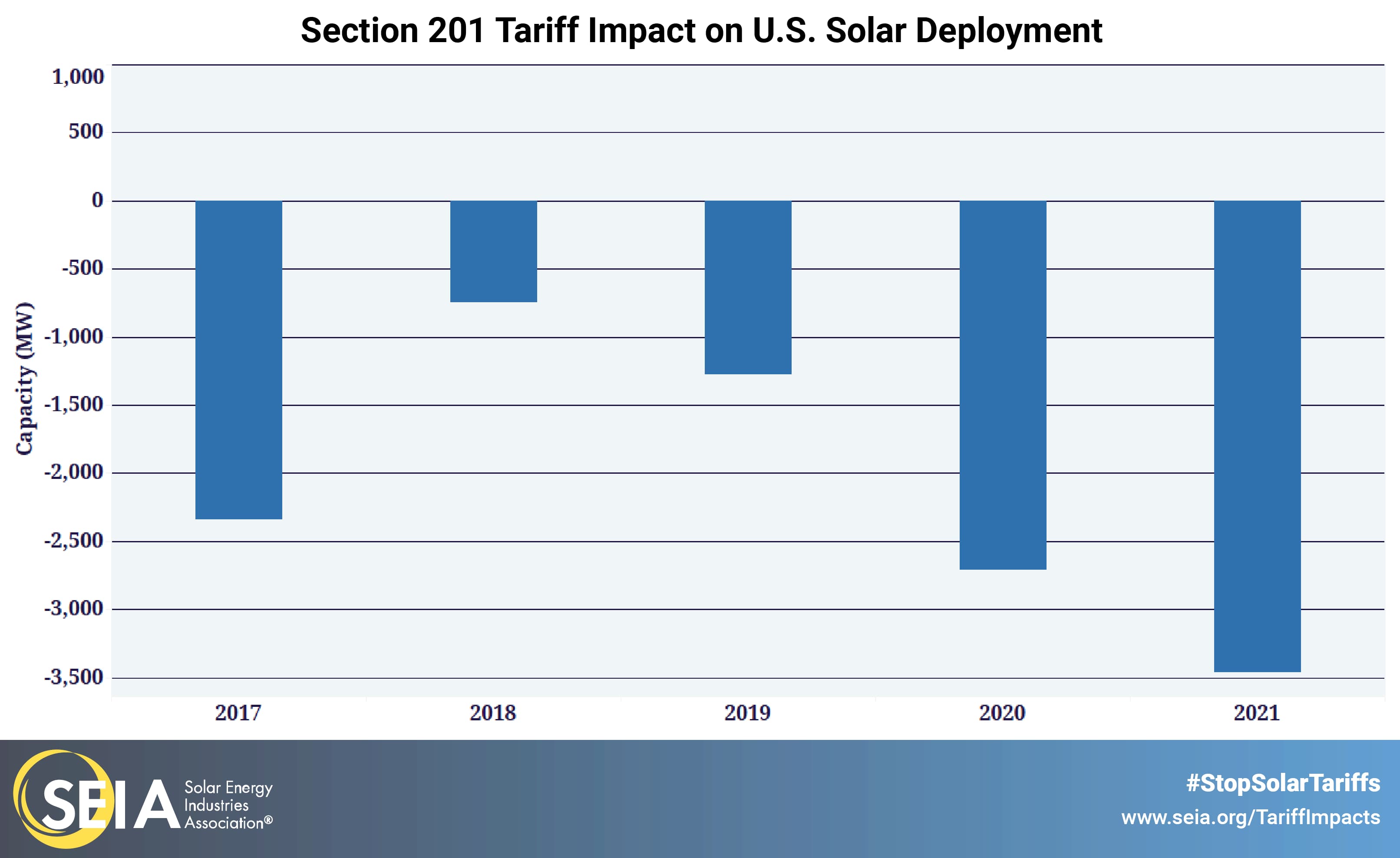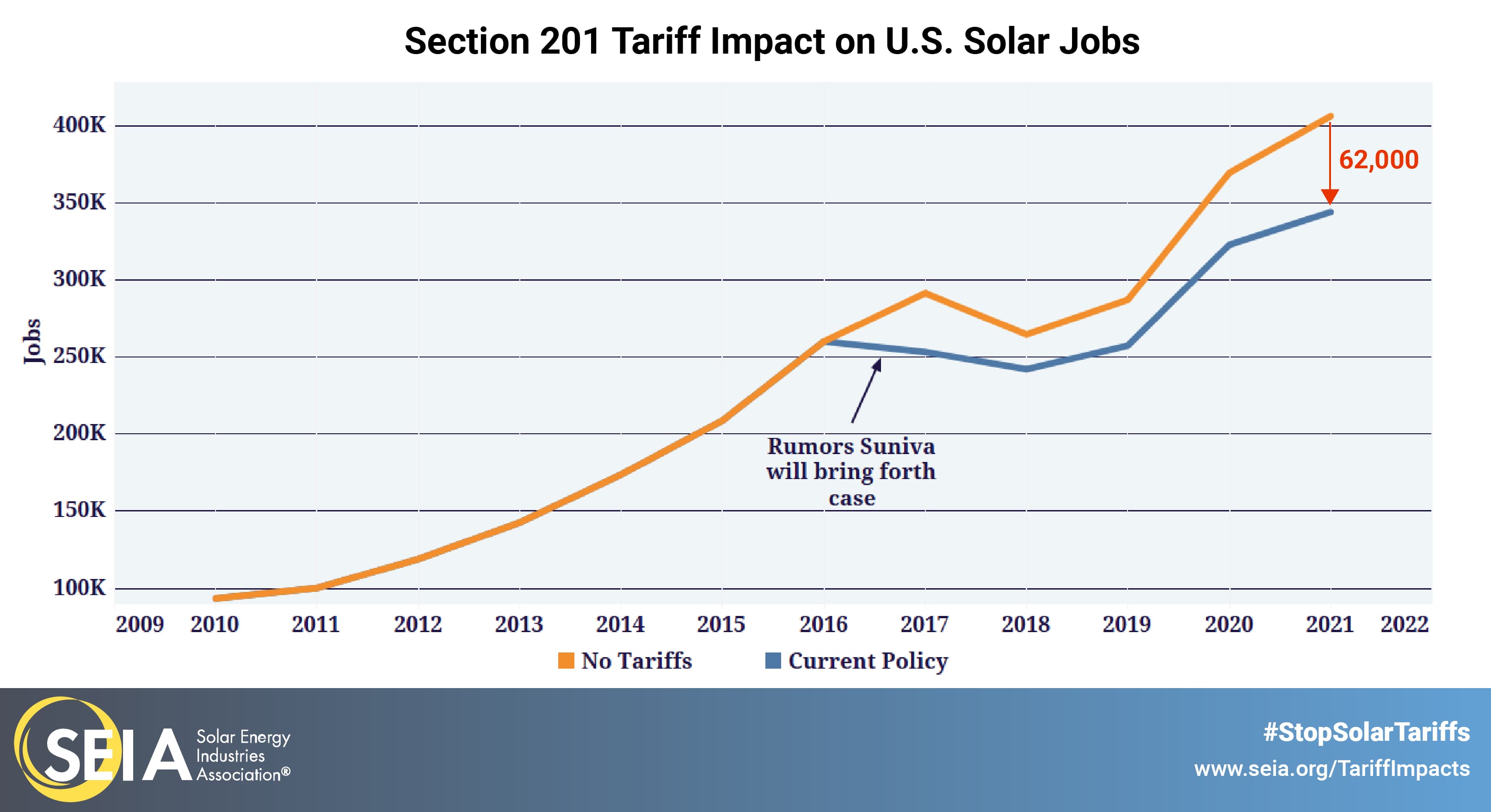Tariffs on imported solar cells and modules have led to the loss of more than 62,000 U.S. jobs and $19 billion in new private sector investment, according to a market impact analysis released today by the Solar Energy Industries Association (SEIA).
The analysis comes as the midterm review process for the tariffs begins at the U.S. International Trade Commission on Dec. 5, and covers tariff impacts from the beginning of the 2017 trade complaint by Suniva through the end of the tariff lifecycle in 2021.
“Solar was the first industry to be hit with this administration’s tariff policy, and now we’re feeling the impacts that we warned against two years ago,” said Abigail Ross Hopper, president and CEO of the Solar Energy Industries Association. “This stark data should be the predicate for removing harmful tariffs and allowing solar to fairly compete and continue creating jobs for Americans.”
In addition to its economic impact, tariffs on solar have caused 10.5 gigawatts (GW) of solar installations to be cancelled, enough to power 1.8 million homes and reduce 26 million metric tons of carbon emissions.
KEY FIGURES FROM THE ANALYSIS:
• Solar tariffs are costing the U.S. more than $10.5 million per day in unrealized economic activity
• Each new job created by the tariff results in 31 additional jobs lost, 5.3 megawatts of solar deployment lost and nearly $9.5 million of lost investment
• Reduced solar deployment figures will increase emissions equivalent to 5.5 million cars or 7 coal plants
Tariffs on solar are most harshly affecting nascent solar markets including Alabama, Nebraska, Kansas, and the Dakotas. These markets won’t be able to get off the ground because tariffs make solar uncompetitive.
The Section 201 solar tariffs began at 30% in 2018, and ramped down to 25% in 2019, 20% in 2020 and 15% in 2021.
— Solar Builder magazine




Leave a Reply
You must be logged in to post a comment.